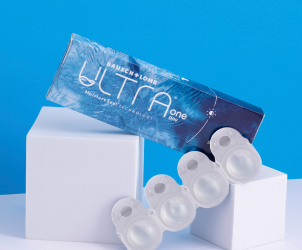It’s called Dry Eye Syndrome (DES) or Dry Eye Disease (DED), but you may have heard of it as dry eyes: a prevalent condition affecting people of all ages. So what is it? Characterised by itching, burning, and a gritty sensation, dry eyes occur when your tears can’t provide adequate lubrication.
Or, ironically, when an excessive amount of tears are produced as a reaction to an insufficiency of consistent tear film production. Yes, dry eyes can feel like running, and watery eyes, too!
Although dry eyes might seem trivial, they can profoundly influence your daily comfort and quality of life.
What Causes Dry Eye?
Various factors, including medications, skin conditions, and eye surgeries, can cause dry eyes. Consider also:
- Certain systemic medications like antihistamines, corticosteroids, and topical medications such as glaucoma drops can lead to dry eye symptoms.
- Skin diseases around the eyelids and issues with the meibomian glands, which produce oil for the tears, can also contribute to dry eyes.
- Additionally, undergoing eye surgeries like LASIK or cataract surgery can increase the risk of experiencing dry eye symptoms
[Systemic Medications refer to medications that affect the entire body rather than being localised to a specific area.]
[What are the Meibomian glands? The Meibomian glands are tiny oil glands found in the eyelids. They produce Meibum, an oily substance that moistens the eye surface and prevents tears from drying up. This oil also helps to keep the tear film stable, ensuring clear vision and comfortable eyes.]
BOOK AN EYE TEST
Additionally, conditions like thyroid disease, Sjogren syndrome, and rheumatoid arthritis may contribute to the occurrence of dry eyes and various symptoms.
Environmental factors that can exacerbate dry eye symptoms include:
- Exposure to chemical fumes.
- Exposure to cigarette smoke.
- Environments with low humidity levels.
What are the Signs and Symptoms to Look For?
Dry eye may be characterised by various symptoms, including:
- Stinging, burning, or a sensation of pressure in the eyes.
- Experiencing a sandy or gritty feeling when blinking.
- Excessive tearing (watery eyes).
- Eye pain.
- Redness.
- Blurry vision (difficulty with concentrated vision tasks such as reading).
Recognising the symptoms of dry eyes is essential for early detection and treatment. If you experience any of these symptoms, consult an optometrist for a comprehensive eye examination. These initial eye tests are generally bulk-billed [well they are at Optical Superstore!], and your optometrist can provide a referral to an eye specialist (ophthalmologist) as needed.
BOOK AN EYE TEST AT YOUR CLOSEST OPTICAL SUPERSTORE
DID YOU KNOW? You Can Have Dry Eye Without Notable Symptoms
Dry Eye Disease (DED) is diagnosed through a comprehensive evaluation of both symptoms and signs. Unlike other conditions with clear-cut indicators, no single, specific symptom or sign definitively indicates DED.
Instead, healthcare professionals consider the symptoms reported by the patient, such as dryness, irritation, or discomfort, along with signs observed during an eye examination, like redness, inflammation, or changes in tear production.
It’s important to note that a person may have signs of DES or DED without experiencing noticeable symptoms, and vice versa. Therefore, a thorough assessment during an eye test that considers symptoms and signs is necessary to diagnose DED accurately.
BOOK AN EYE TEST AT YOUR CLOSEST OPTICAL SUPERSTORE
What is the Treatment for Dry Eye?
Treatment options may include artificial tears, such as ocular lubricants, ointments, and serum eye drops. Ongoing support from your eye care professional may also be required, as they assist with intense pulsed-light therapy and the expression of the Meibomian glands (massaging the eyelids to produce the oil film onto the eye).
Your optometrist may also discuss lifestyle modifications: changing indoor humidity levels where achievable (eliminating high-force fans/airflow and introducing humidification).
Also considered are further prescription medications to alleviate symptoms and improve eye comfort.
Proactively prevent and manage dry eyes with simple steps!
Simple strategies, such as limiting screen time, ensuring frequent blinking, using artificial tears, and maintaining a cool, moist environment at home, can alleviate symptoms and improve eye comfort.
However, if you are already experiencing dry eye symptoms, consult your healthcare provider for personalised guidance and treatment options tailored to your needs. Taking these proactive steps can help you maintain optimal eye health and comfort.
MAKE AN EYE TEST APPOINTMENT FOR DRY EYE TODAY








